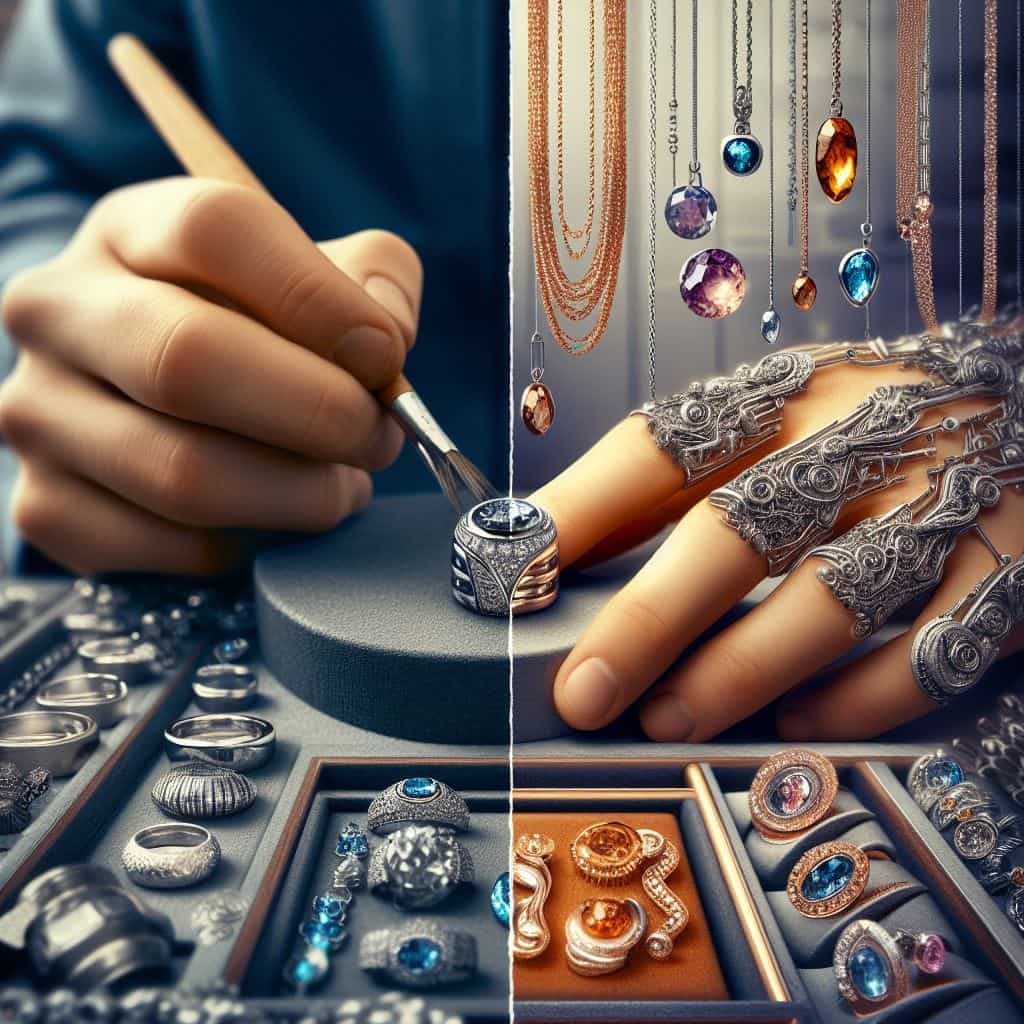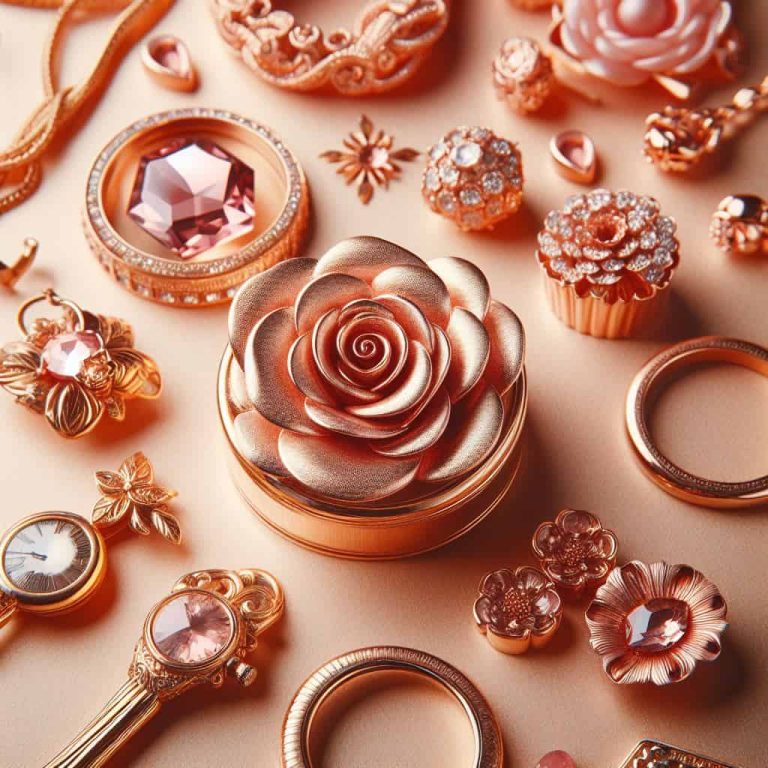Does Brass Tarnish? And How to Clean Brass Like an Expert
There is a common but incorrect myth that the patina on brass is bad for your skin.
Do you have a favourite piece of brass antique jewelry that fills with green stains when not worn?
What is that?
Is it okay to be worn? Is it some type of toxic?
Today, I will be discussing the source of this “blue-green” stain that is typical on brass accessories and how to remove it.
Does Brass Tarnish?
In short, yes.
Brass is a popular material used in accessories.
Many people love the look of brass accessories because it is a unique yellow that is unlike gold.
Brass also has a vintage look and feel to it.
The most distinctive feature of brass is that its colour and texture can change over time.
One of the reasons why brass is so attractive to some is that it can age over time.
Just like the aging process of leather products, brass darkens with time.
CAUSE FOR DISCOLOURATION
A bluish-green stain forms when a brass accessory is left uncleaned.
This is a substance called patina.
Patina is the rust of copper formed by the oxidation of copper.
Since brass is a copper alloy made by mixing zinc with copper, it reacts with sweat and water to form a bluish-green rust.
While pure silver does not rust, brass, which is a copper alloy can rust.
DOES BRASH TARNISH AFFECT MY SKIN?
For a long time, patina was believed to be toxic.
While the tarnish on brass won’t have any adverse effects on your health, the appearance of it can bother some.
Don’t worry!
It is very easy to clean.
You can even do it in the comfort of your own home.
When it is first formed, patina is weak enough to be removed by wiping it with a cotton swab.
However, if your patina-laden brass accessories are constantly in contact with your clothes, there’s a chance where your clothes may stain.
What is Brass in the First Place?
Brass is an alloy of copper and zinc.
A brass alloy has a zinc content of 20% or more.
Asides from jewelry and accessories, brass has a wide variety of applications such as musical instruments, cutlery, clocks, etc.
Its durability and easy of processing makes it such a versatile metal.
WHAT IS THE DIFFERENCE BETWEEN BRASS AND PLATING?
Plating is a surface treatment that thinly coats the surface of a metal (and sometimes even a non-metal) with another metal.
For example: A gold plated ring would mean that while the exterior of the ring is gold, the underlying base metal can be a different material.
There are various reasons why a metal is plated, such as increasing the strength of the base metal, preventing rust and deterioration, and improving decorativeness.
Brass itself is a metal that is not often used as a coating.
But, it is often used as the base of the plated material or the content to be coated.
AGING BRASS
Brass does not corrode easily, but it oxidizes when exposed to air and gradually appears darker in colour.
It is an attractive change that you can enjoy as the metal ages.
But, when not treated carefully, the darkening may become too dark to a point where it becomes bluish-green.
This appears due to sweat and moisture.

Although patina is harmless to the human body, it may stain clothing.
Like all other jewelry, proper care is important for the longest enjoyment of brass accessories.
Can I Get My Brass Accessories Wet?
Brass is a material that is very sensitive to moisture.
If you ever wear it as an accessory, it will inevitably be exposed to some type of moisture like sweat or water.
Leaving it as it is will cause darkening and rust.
After you get home and remove your accessories, wipe them gently with a soft dry cloth and store them in a dry and dark place to prevent oxidation.
SPECIAL CARE: REMOVING DARKENING, RUST AND PATINA OF BRASS
If the discolouration of brass becomes too dark to your liking, you can polish the brass in various ways to restore its original shine and colour.
You can use a commercially available metal polishing cloth or a polishing agent to polish it.
There are even some home remedies you can try out.
METHOD 1: USING VINEGAR
If you want to get rid of dark spots and regain the brilliance your brass once had when you bought it, try vinegar!
We recommend dipping brass in vinegar (citric acid or lemon can be used instead as well).
The method is simple, just put ordinary vinegar in a small container and submerge your tarnished brass item.
Soak your tarnished brass for about 3 minutes.
However, depending on the amount of tarnish, you may want to soak it for a shorter or longer period of time.
After taking it out of the vinegar, rinse it with water and polish it with a soft cloth.
If this method doesn’t help you get rid of stubborn stains, add salt to the vinegar and gently rub.
The salt acts as a type of abrasive, but be careful not to scrub too hard as your jewelry may get scratched.
IMPORTANT NOTES WHEN USING THE VINEGAR METHOD
- Vinegar has an effect of corroding brass surfaces. If your accessory is immersed for too long, another type of reddish discolouration may form. Don’t keep your brass jewelry piece submerged in the vinegar solution for more than 5 minutes.
- If you do not wash the vinegar off properly with water and wipe it off, discolouration and rust can form.
- This method may not be suitable for those who want to clean their brass jewelry but retain that aged antique feeling. If this is what you’re trying to achieve, try the baking soda method introduced below.
METHOD 2: USING BAKING SODA
Baking soda is now a standard cleaning tool as it is such a natural cleaning agent.
It has a wide range of uses such as removing stains, removing dirt, and removing mold.
Actually, it can also be used to care for brass accessories.
A common way to polish brass with baking soda is to mix baking soda and water in a 2:1 ratio.
This will form a paste-like substance which you can gently rub with a cloth or dab with your fingers.
If you want to clean dark areas or uneven areas, it is recommended to use a cotton swab or toothbrush. Make sure to polish gently so as not to damage it by either method.
As you wash, you can see that the white paste gradually darkens as it removes dirt and grime.
As with vinegar care, rinse with water and wipe dry after polishing.
IMPORTANT NOTES WHEN USING THE BAKING SODA METHOD
- If you rub it too hard, it you may scratch the surface of your brass jewelry, so polish gently.
- If you do not wash the baking soda properly with water and wipe it off, it may cause further discolouration or even rust.
Purpose of Patina
Patina is a rust that forms on copper alloy.
In the world of accessories, it is an indispensable process used for colouring purposes.
Ammonia and vinegar are used to create a patina and to give it a unique texture.
A well-established patina does not easily come off by rubbing.
Conclusion
Brass accessories are perfect and go well with autumn or winter outfits.
They add a unique and antique vibe to any look.
Today, we talked about the bluish-green stains inherent to brass accessories, safety and maintenance.
While patina is not toxic, it still requires early care as it may stain clothes.







